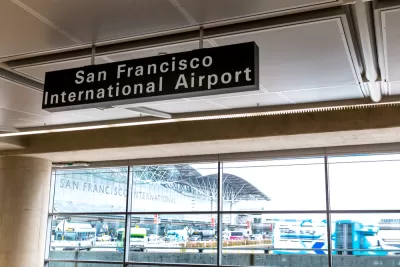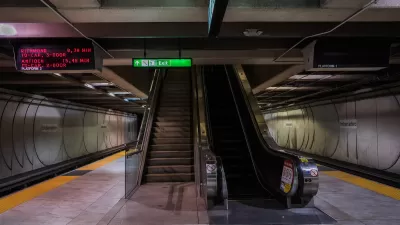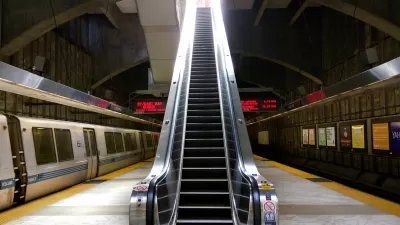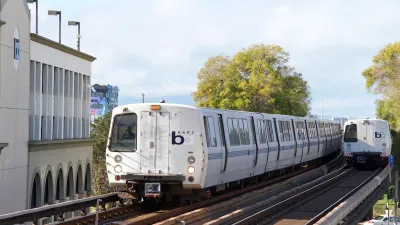With weekday commuter ridership still lagging far below 2019 levels and remote work not going anywhere anytime soon, the agency plans to increase train frequencies on weekends and reduce some weekday service.

The Bay Area Rapid Transit (BART) agency, which serves the San Francisco Bay Area, plans to adjust its service to better serve weekend travelers as weekday ridership remains low, reports Adam Shanks in the San Francisco Examiner. “With office vacancy rates in downtown San Francisco climbing to record highs, BART is planning to direct its finite resources to better serve those who rely on the transit agency during off-peak hours.”
Shanks continues, “Under a proposal introduced this week, BART would reduce most lines from four to three trains per hour during the day, but increase service from two to three trains per hour at night and on the weekends.”
In March of this year, weekday ridership was only at 37 percent of pre-pandemic levels. “The yellow line, which runs between Millbrae and Antioch, would be the only one spared from the weekday daytime cuts. It’s BART’s most popular ride, with the busiest train seeing a passenger load more than three times that of the most-packed Orange line train, for example.” BART also plans to increase frequencies on the yellow line and to the region's airports.
Like many other transit agencies, “BART is facing a budget deficit of about $78 million in 2025, when its tranche of federal COVID-19 aid runs dry.”
FULL STORY: BART Plans to Increase Weekend Service, Decrease Service on Weekdays

Alabama: Trump Terminates Settlements for Black Communities Harmed By Raw Sewage
Trump deemed the landmark civil rights agreement “illegal DEI and environmental justice policy.”

Planetizen Federal Action Tracker
A weekly monitor of how Trump’s orders and actions are impacting planners and planning in America.

How Atlanta Built 7,000 Housing Units in 3 Years
The city’s comprehensive, neighborhood-focused housing strategy focuses on identifying properties and land that can be repurposed for housing and encouraging development in underserved neighborhoods.

In Both Crashes and Crime, Public Transportation is Far Safer than Driving
Contrary to popular assumptions, public transportation has far lower crash and crime rates than automobile travel. For safer communities, improve and encourage transit travel.

Report: Zoning Reforms Should Complement Nashville’s Ambitious Transit Plan
Without reform, restrictive zoning codes will limit the impact of the city’s planned transit expansion and could exclude some of the residents who depend on transit the most.

Judge Orders Release of Frozen IRA, IIJA Funding
The decision is a victory for environmental groups who charged that freezing funds for critical infrastructure and disaster response programs caused “real and irreparable harm” to communities.
Urban Design for Planners 1: Software Tools
This six-course series explores essential urban design concepts using open source software and equips planners with the tools they need to participate fully in the urban design process.
Planning for Universal Design
Learn the tools for implementing Universal Design in planning regulations.
Caltrans
Smith Gee Studio
Institute for Housing and Urban Development Studies (IHS)
City of Grandview
Harvard GSD Executive Education
Toledo-Lucas County Plan Commissions
Salt Lake City
NYU Wagner Graduate School of Public Service





























